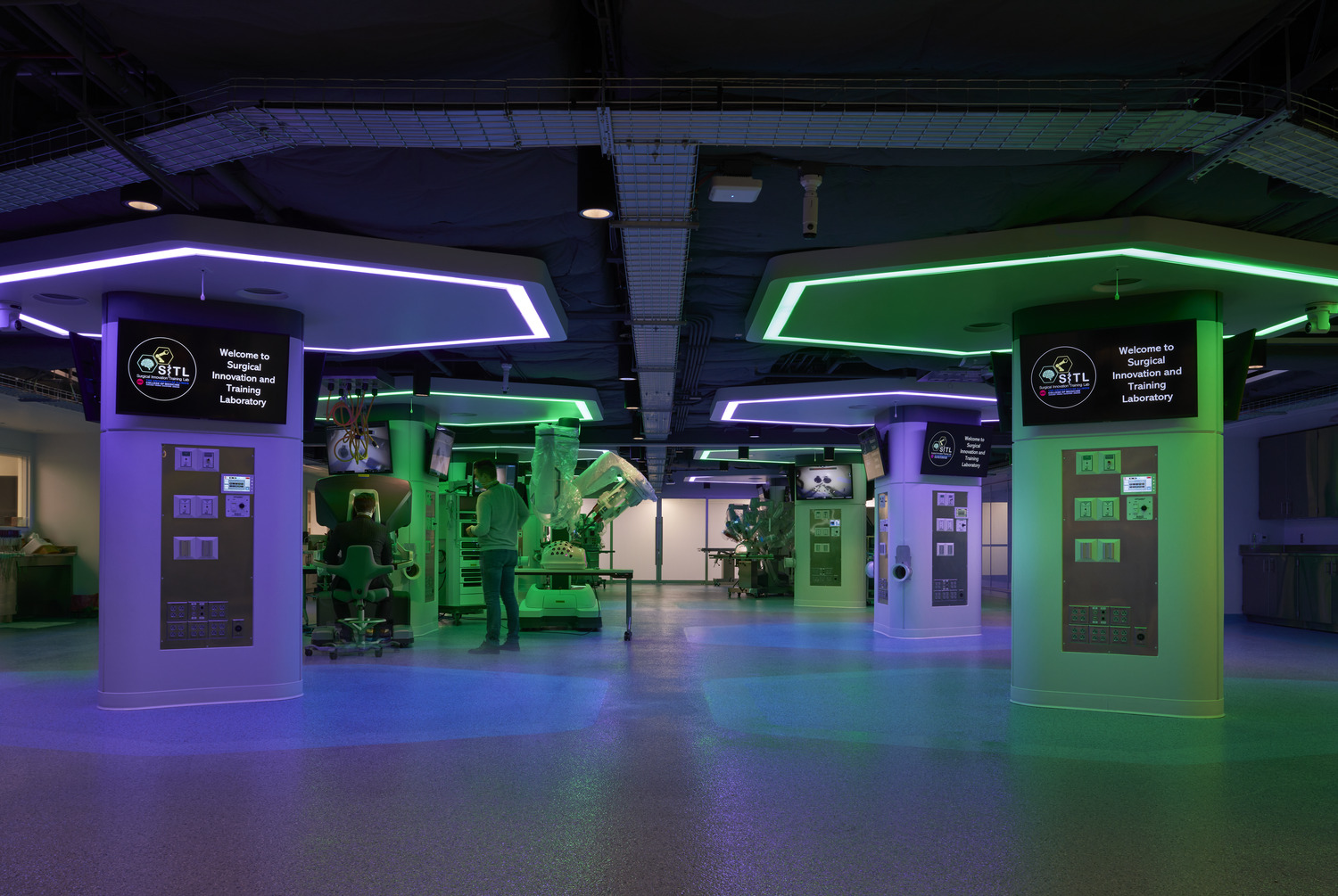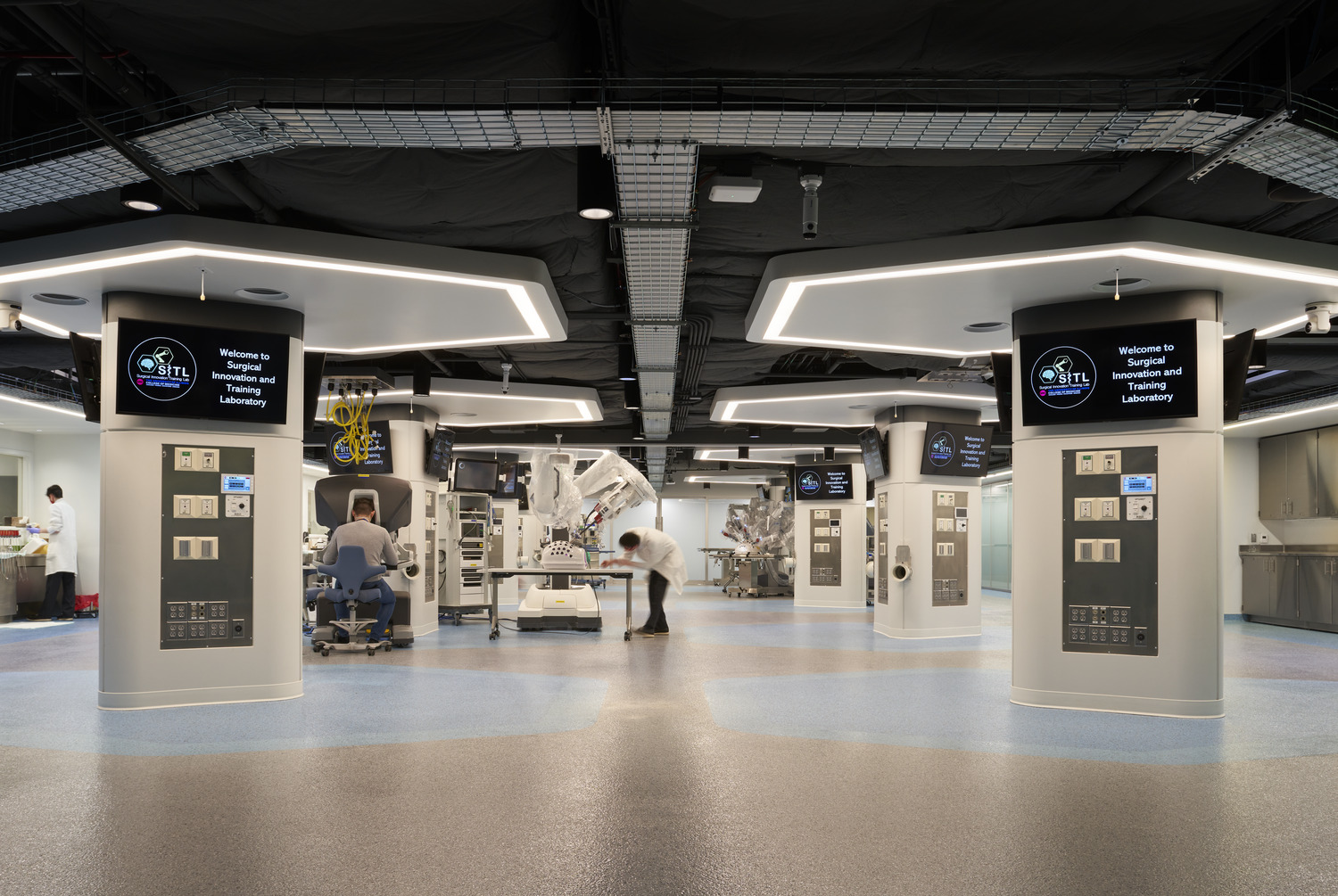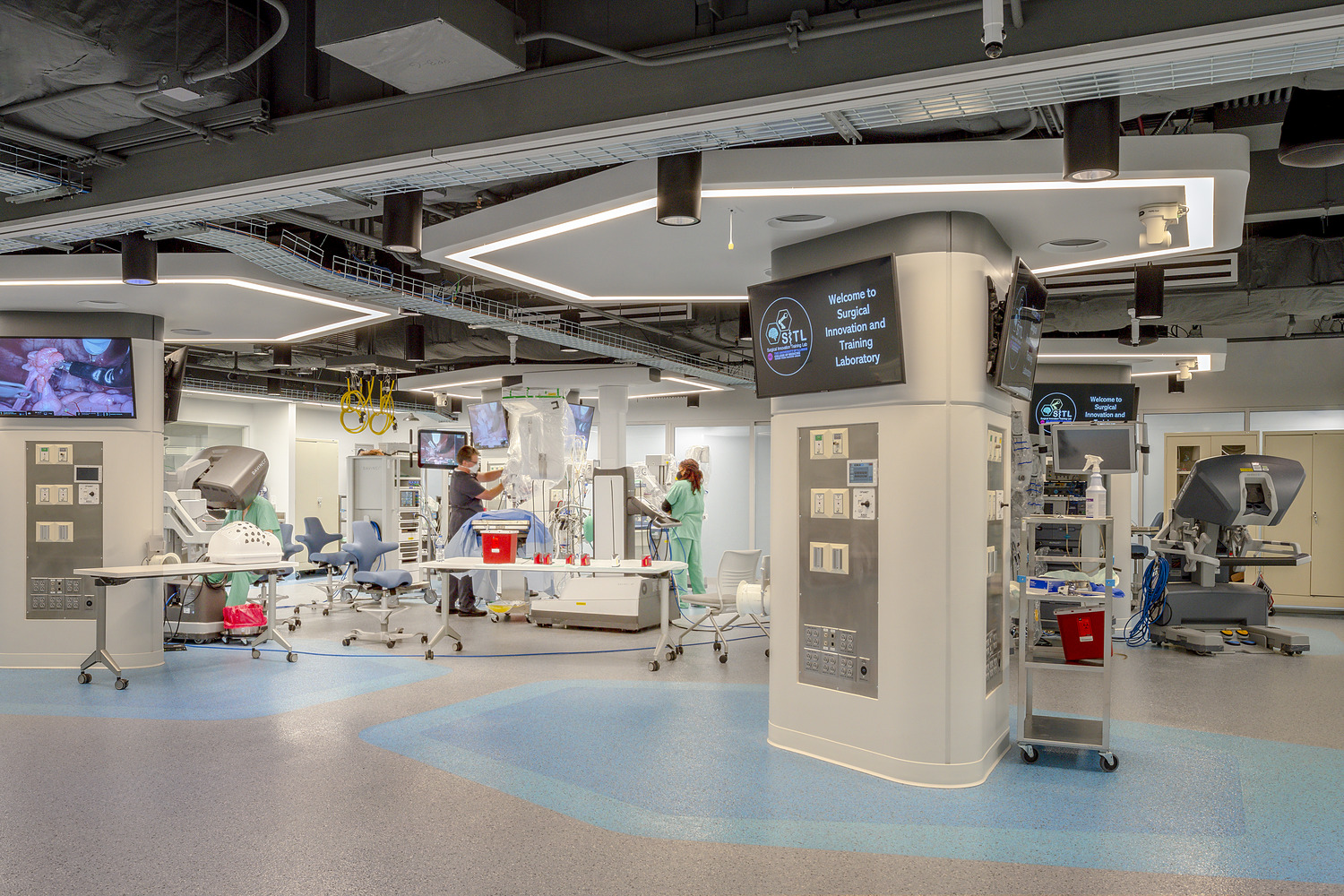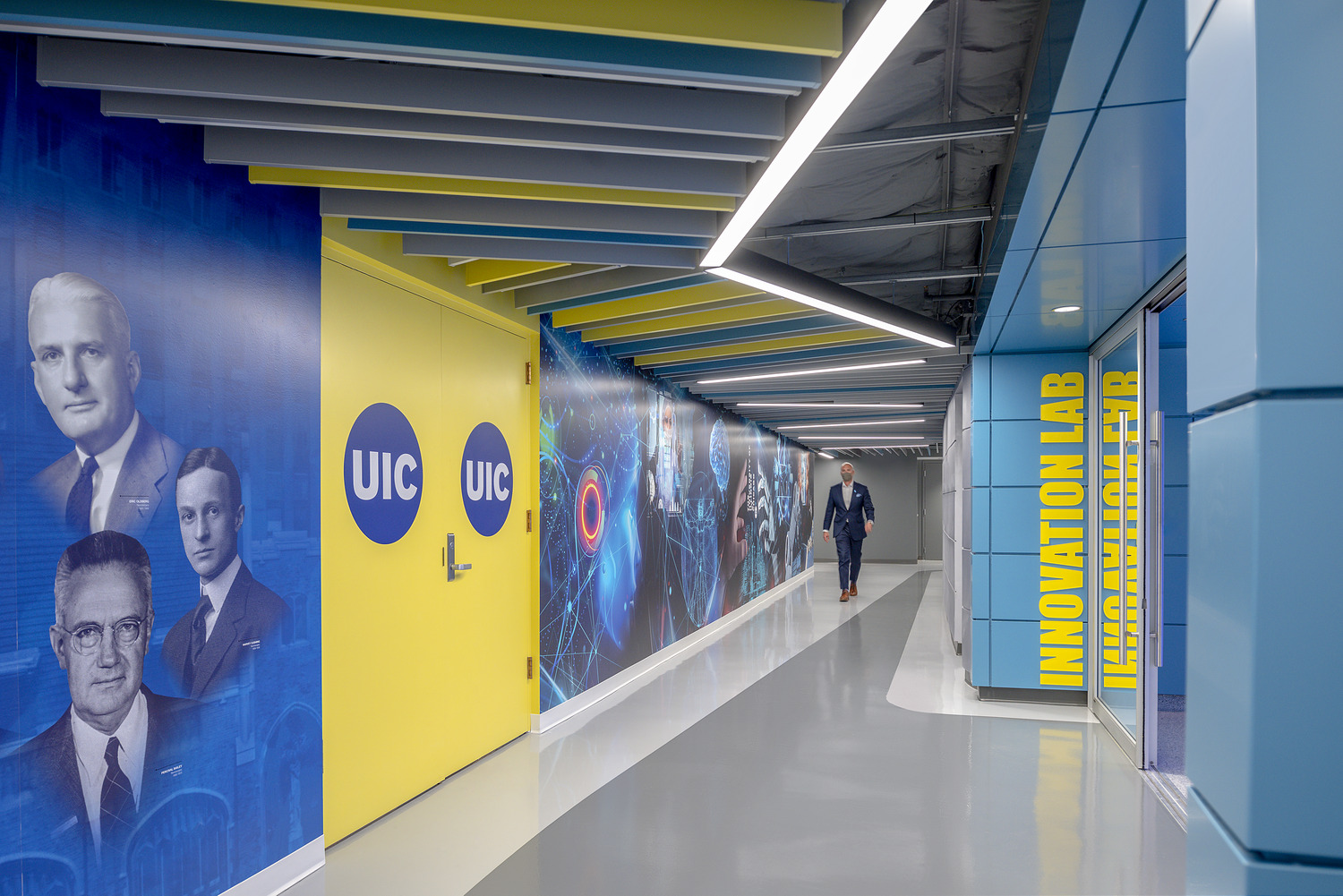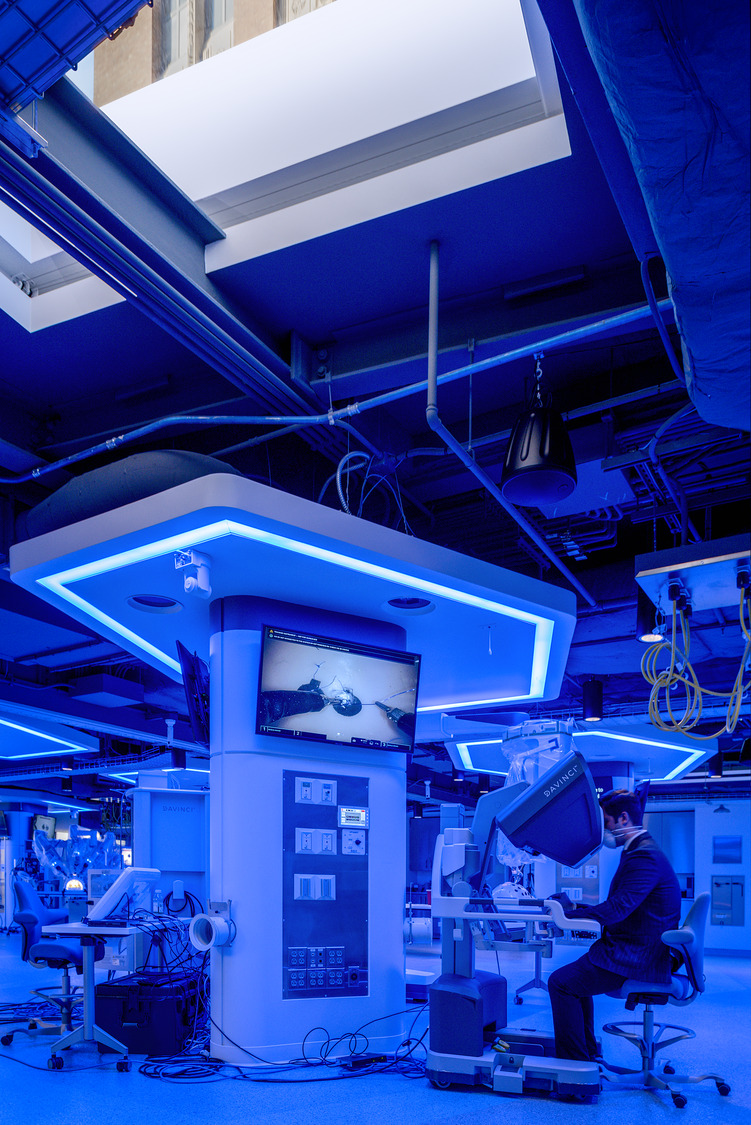Pioneering surgeries of the future
A dark and unused space in the basement of the University of Illinois Chicago’s Neuropsychiatric Institute has been transformed into a state-of-the-art simulation laboratory meant to springboard the surgical innovations of the future.
Simulation is increasingly being used as a tool to better understand the tasks, environments and processes that support the training and delivery of healthcare services. The 17,000-sf College of Medicine’s Surgical and Innovation Training Lab (SITL) takes simulation and surgical education one step further by creating a space that will imagine, experiment and help create the surgical rooms of the future and allow surgeons to train with the latest in robotic and minimally invasive surgical tools.
UIC challenged our design team to create a space that allows for education using today’s latest technologies and also includes a space for “out of the box” thinking, experimentation, research, collaboration and discoveries. It is one of the only training spaces existing today that aims to advance medicine and surgery in such unknown or harrowing terrains. The ability to test out surgical procedures in untested environments– outer space, (a space shuttle, the International Space Station, Mars) the desert, a life raft– is a core piece of the SITL and how Dr. Pier Giulianotti, professor of surgery and chief of the division of general, minimally invasive, and robotic surgery, hopes to push the future of surgery and its practitioners forward.
The resulting space used the flexibility of theater design as inspiration. Theater stages are designed with behind-the-scenes storage spaces for quick set and costume changes. The centerpiece of the SITL is the Innovation Lab, which connects a traditional surgical space and an experimentation research garage known as the Surgical Innovation Garage. Storage spaces allow for adaptability and flexibility – equipment can move in and out to create different modes of use. It is also meant to pioneer the future “surgineer,” the future surgeon being a clinician as well as a computer scientist and a medical technology engineer and inventor.
The combination of warm wood and metallics in the interiors give the lab an inviting and modern feel with a futuristic look. A green wall in a conference room brings nature into the underground space, and triangular skylights, inspired by the Louvre museum glass pyramid, allow light into the basement from the plaza above.

